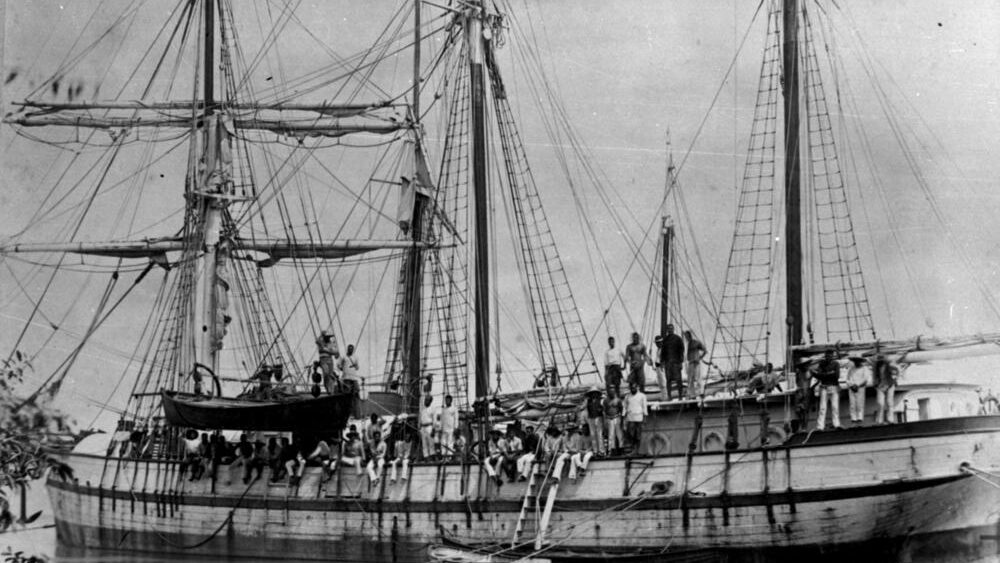The Aussie Christians who owned slaves
When the British paid compensation to slave owners as part of Wiberforce’s deal to get enough votes to end slavery, they left behind a detailed record of who owned slaves. The University College, London, (UCL) has compiled a database, Legacies of British Slave-ownership, which details individuals and companies compensated in 1835 The Australian’s Jacquelin Magney reports.
It includes members of the “Aussie Elite”.
Among them, Christians. Either as slave owners, or connected to the slave trade.
“George Fife Angas, a pillar of the South Australia establishment, who collected compensation on behalf of four others for 121 slaves in Honduras,” Magney reports.
Angas is described as the “chief patron” of the settlement of SA by Stuart Piggin and Robert D. Linder in their “The Fountain of Public Prosperity” a magisterial history of evangelical Christians in Australia.
“Among the many settlers who left the evangelical liberal stamp on South Australia, Angas stands it as the colossus, influential unremitting in his zeal for the new colony, clear in his sense of the providential opportunity the experiment afforded…”
Angas, a Particular (reformed) Baptist sought evangelicals as settlers, and circulated over two million copies of devotional books, especially the works of the Baptist preacher Spurgeon. Angas helped the first Lutherans migrate from Germany and allowed them to settle on his land.
Alexander Kenneth Mckenzie, (MacKenzie in Magnay’s report which identified him as a supporter of Scots Church Sydney and Secretary of the bank of NSW and a slave trader in the West Indies) has other Christian connections. “In 1825 he became treasurer of the Sydney auxiliary of the Church Missionary Society, of the Religious Tract Society” according to the Australian Dictionary of Biography (ADB). He became treasurer of the Bathurst branch of the Bible Society and founded the local bank.
“In 1835, he was awarded compensation for slaves on Waterloo estate on St Vincent and counterclaimed for the Orange Hill estate on the same island,” Magney reports.
Sir Edward Eyre Williams, a judge of Victoria’s Supreme Court, is recorded in ADB as “A keen Anglican, he was a founding member of the Diocesan Society in September 1848 and later supported the establishment of a Sabbath observance association.” The UCL records that “Williams was awarded compensation for 26 slaves in Trinidad as co-trustee with Robert Gwilt of Richard Burton Williams. Richard Williams, believed to be Edward Williams’s brother, was named in the files as a ‘lunatic’’’, The Australian reports.
Robert Allwood was a long-serving minister at St James King Street in Sydney. He was an influential minister in the Sydney Anglican diocese (region) and became vice chancellor of Sydney University. Magnay reports that Allwood “lodged a compensation claim of more than £10,000 for 202 slaves in British Guiana under a mortgage’’.
But perhaps the clearest example of the complicated relationship between keen (rather than nominal) Christianity and slavery belongs to the Young Family – and from the 1880’s rather than the earlier time period of the other examples.
Brothers Arthur and Horace from the Open Brethren family founded the Fairymead Sugar company in Bundaberg, Queensland, and were great innovators. But the sugar industry was based on “Blackbirding” the forcible immigration of Pacific Islanders from the Solomon Islands and Vanuatu. Blackbirding had a mortality rate of 30 per cent, similar to the Atlantic slave trade, despite the Kanaka laborers being mostly on three year contracts.
When their sister Florence came to live on the plantation “she was told that South Sea islanders were animals that it was useless to teach them anything,” Piggin and Lindner write. “She started schools for them and she put salvation ahead of civilisation and education.” She founded the Queensland Kanaka Mission and later the South Sea Evangelical Mission both of which claimed thousands of conversions.
Florence Young is one of Australia’s most significant missionaries. Yet her ministry arose from her family’s involvement in a slave trade. But Florence’s ministry has born a great deal of fruit. The Young family has had generations of significant Christian workers, firstly in the SSEM and much wider, for example in the Sydney Anglican churches. The South Seas Evangelical Church, one of the largest denominations in the Solomon Islands today is described as “evangelical and pentecostal.”
Feedback
Please let us know of other examples of Australian christians owning slaves

